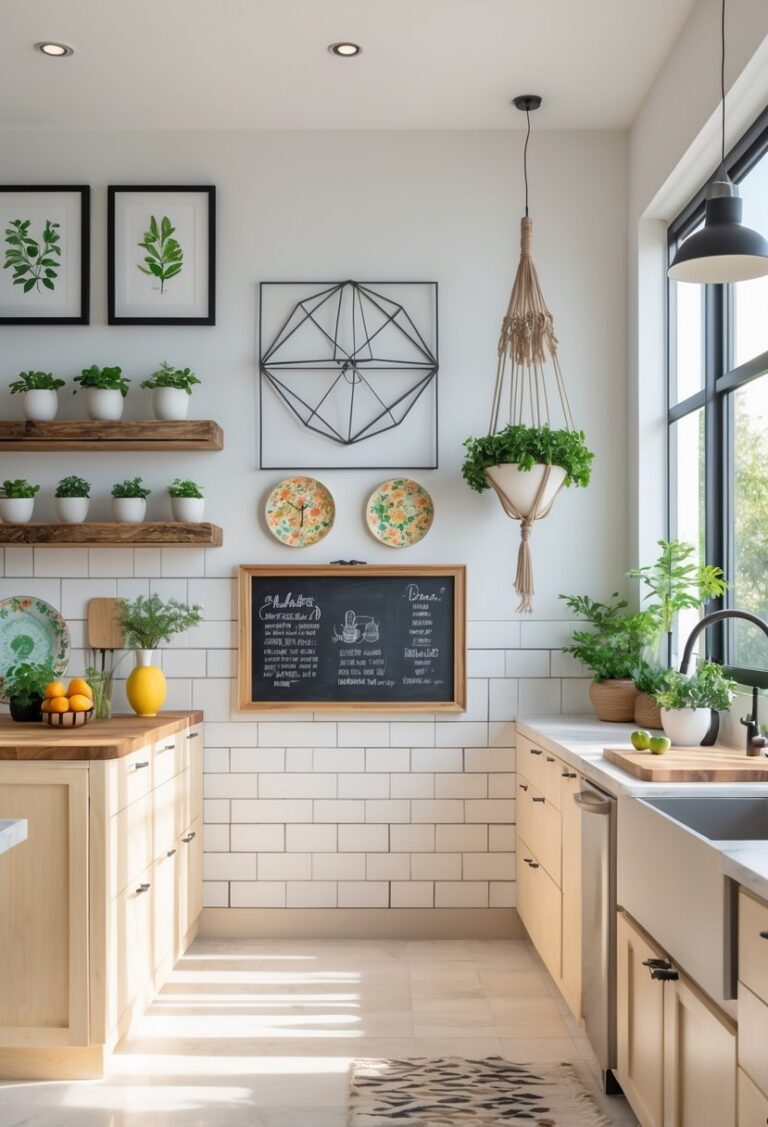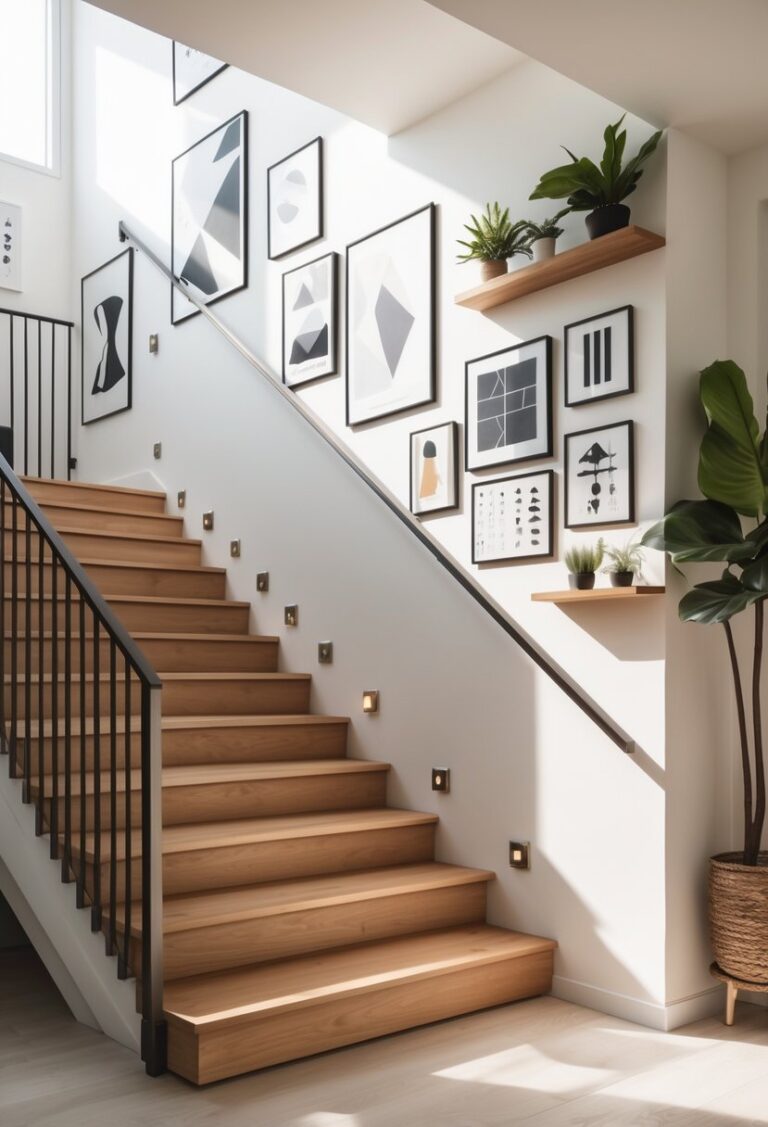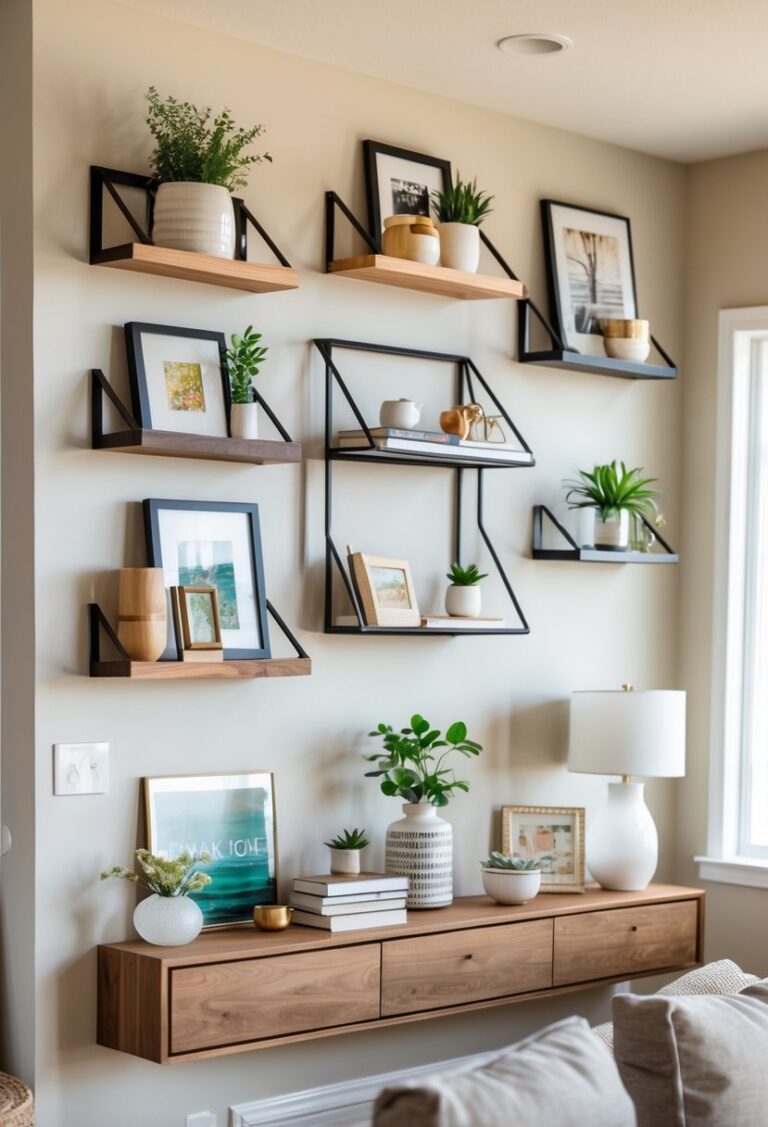Dining Room Wall Decor Ideas to Turn Blank Walls Into Art
Your dining room walls are more than just empty space—they set the mood and style for your whole room. Choosing the right wall decor can make your dining area feel warmer, more inviting, and reflect your personality. Whether you want something simple or a bit more bold, the walls offer a great chance to add character without crowding the space.
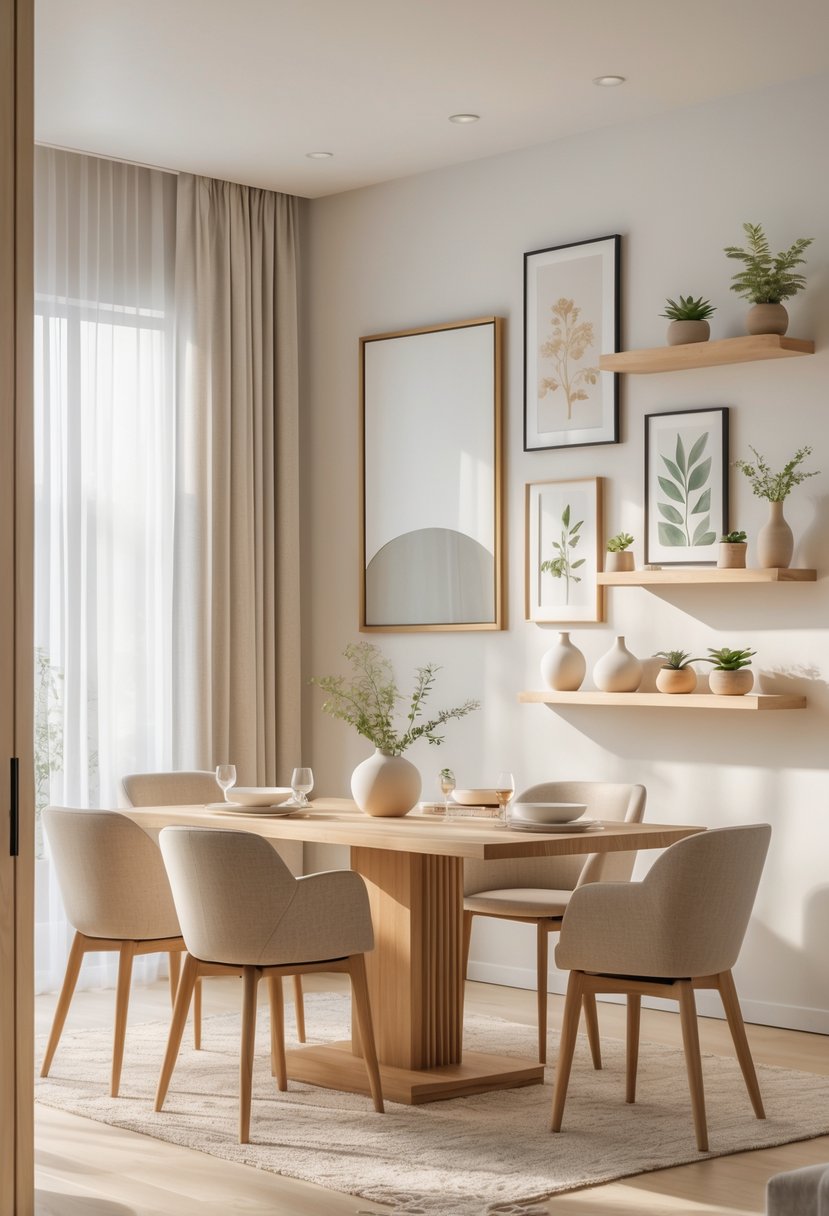
You might not think about the walls as much as the table or chairs, but they can change how the room feels at every meal. With a little thought, you can turn plain walls into a beautiful backdrop that makes your dining time more special and your room look complete.
1) Gallery wall with framed art and photography
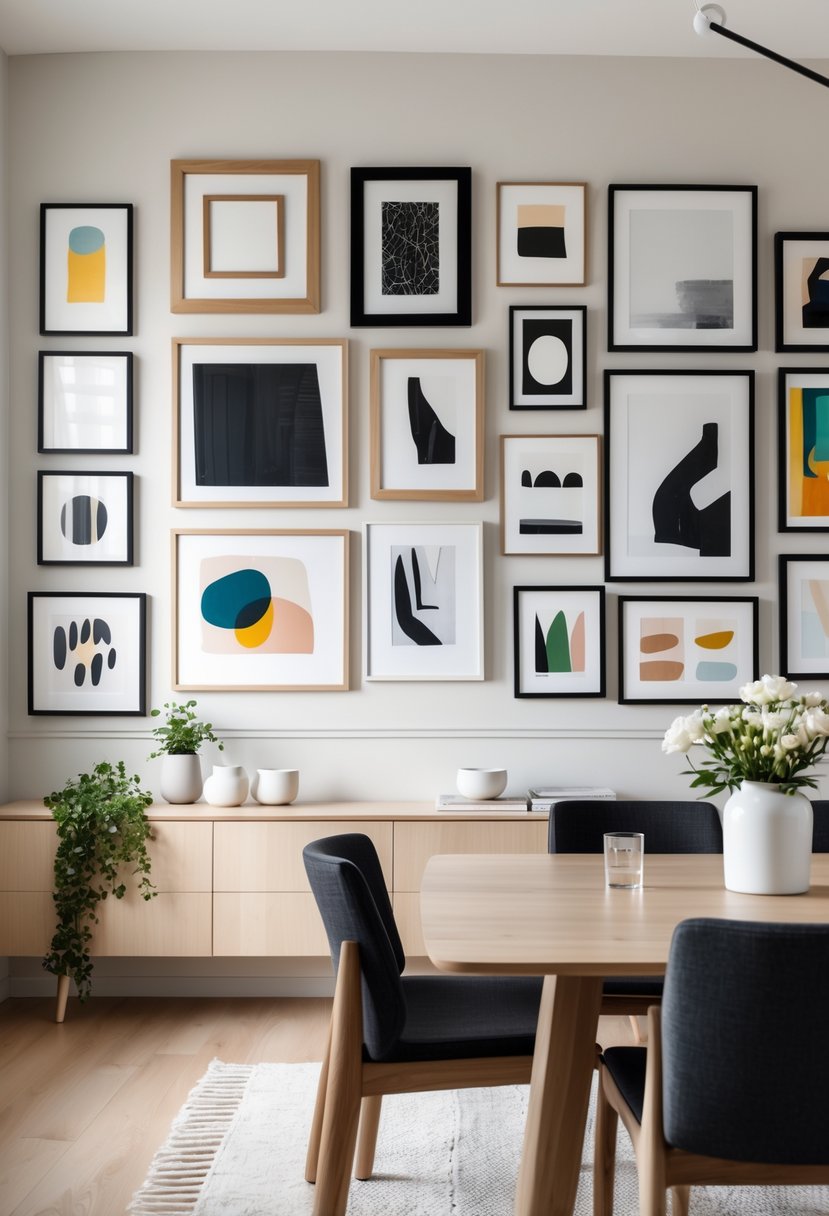
Create a gallery wall by arranging framed art and photos that you love. Mix sizes and styles to add interest but keep frames in a similar color for a clean look.
Choose images that match your dining room’s mood, like black-and-white photos for a classic style or colorful prints for a lively feel. This helps make your space feel personal and inviting.
2) Large decorative mirror to enhance light
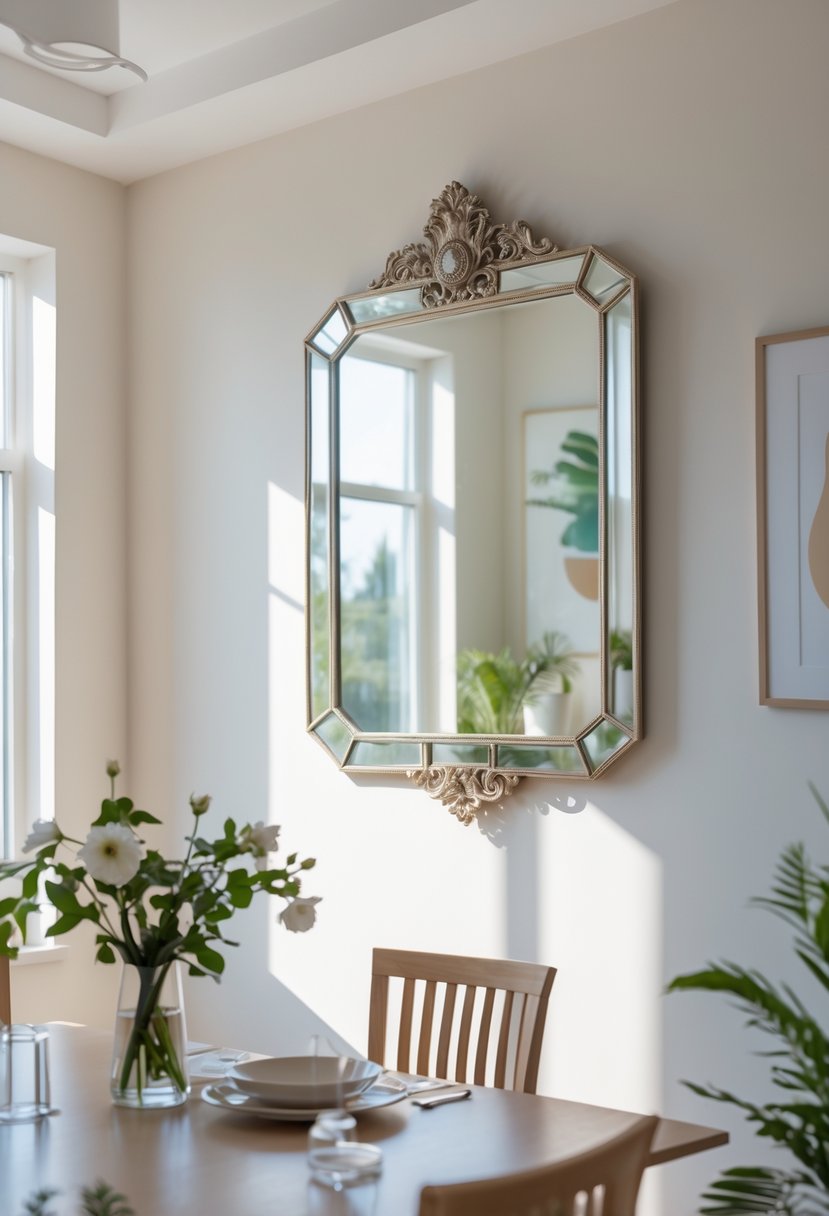
Place a large mirror on your dining room wall to reflect natural or artificial light. This makes your space feel brighter and more open.
Choose a mirror with an interesting frame to add style while improving light. Position it where it can catch light from windows or lamps for the best effect.
This simple change can make your dining area more inviting without crowding the room.
3) Botanical prints for a natural vibe
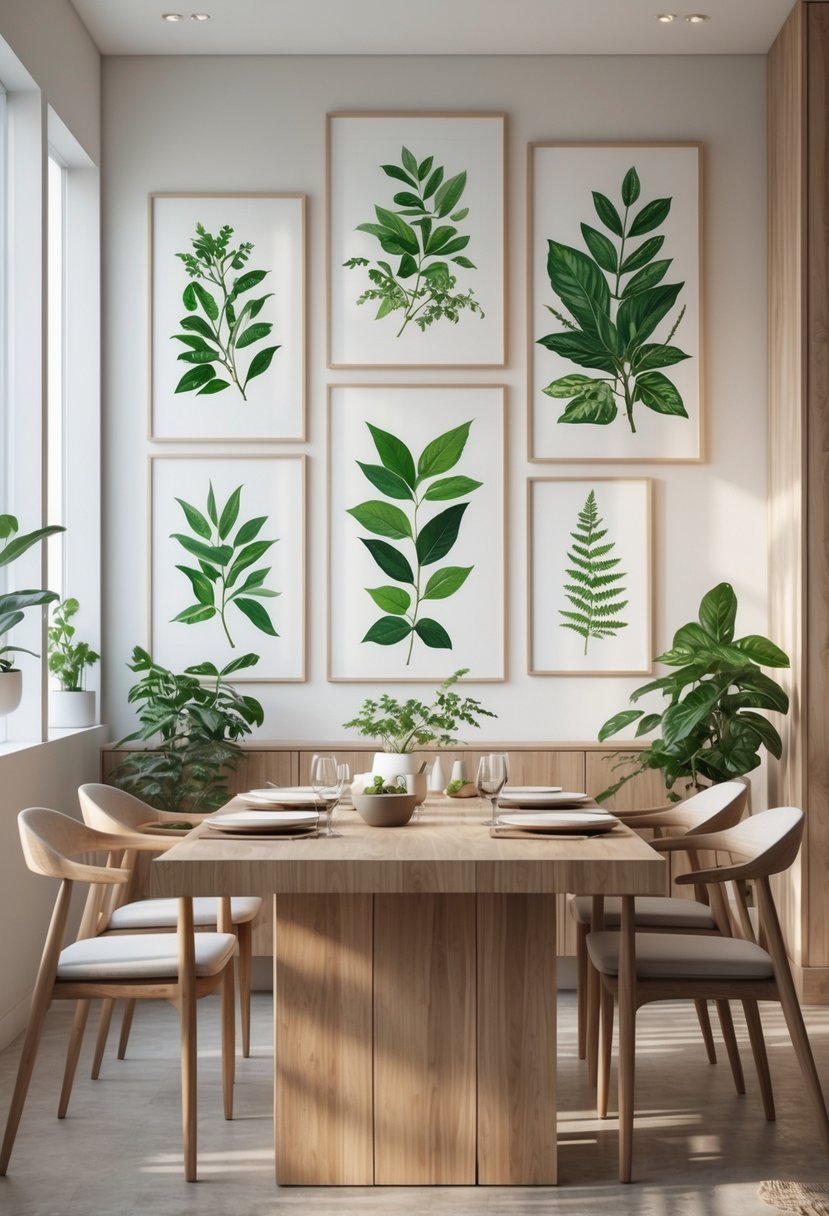
You can create a calm, natural feel by adding botanical prints to your dining room walls. Choose framed leaf illustrations, floral art, or vintage botanical charts for a simple, fresh look.
Mix prints with natural wood shelves or add small plants nearby to bring texture and life. Botanical prints add gentle greenery without extra care.
4) Accent wall with textured wallpaper
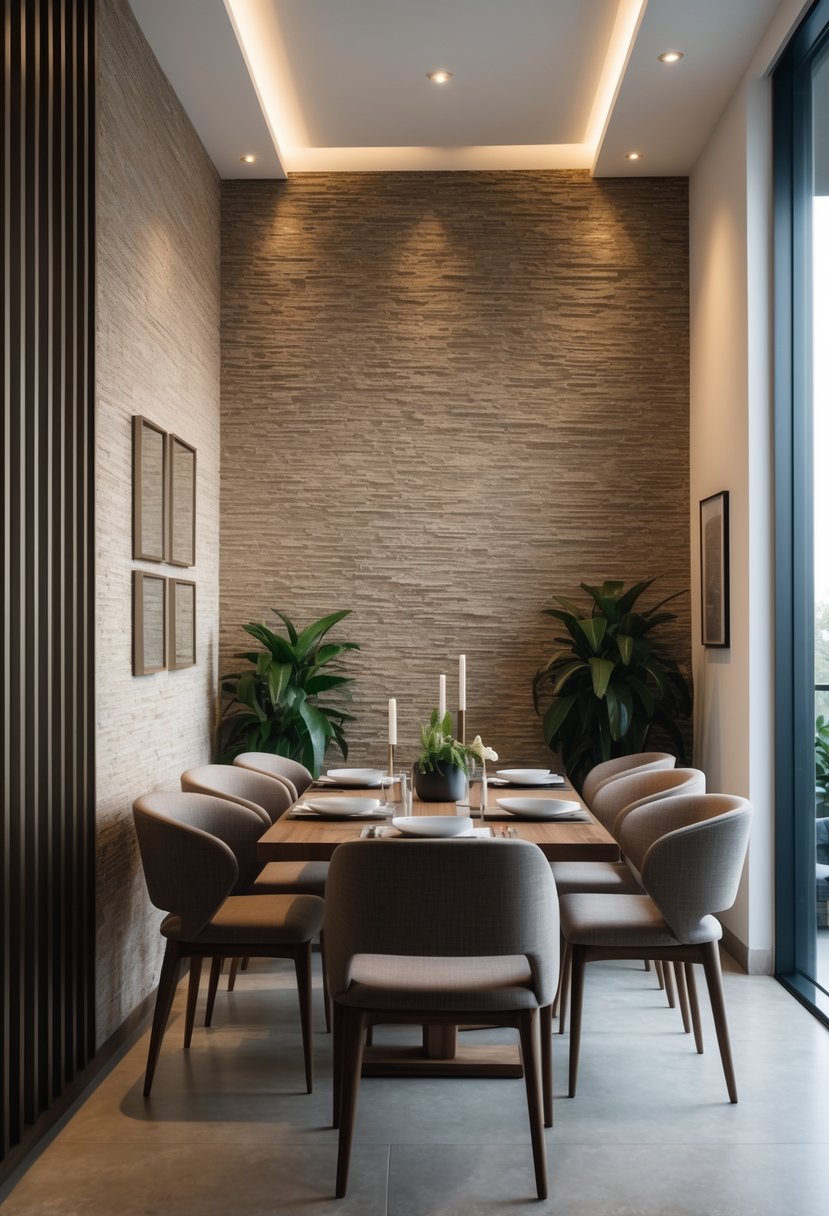
Choose textured wallpaper to add depth and interest to your dining room. Materials like grasscloth or embossed patterns create a subtle, tactile feel.
Pick a color that complements your furniture for a balanced look. You can keep other walls simple to let the texture stand out.
This style works well if you want a unique yet calm background that makes your dining area feel cozy and inviting.
5) Floating shelves with potted plants
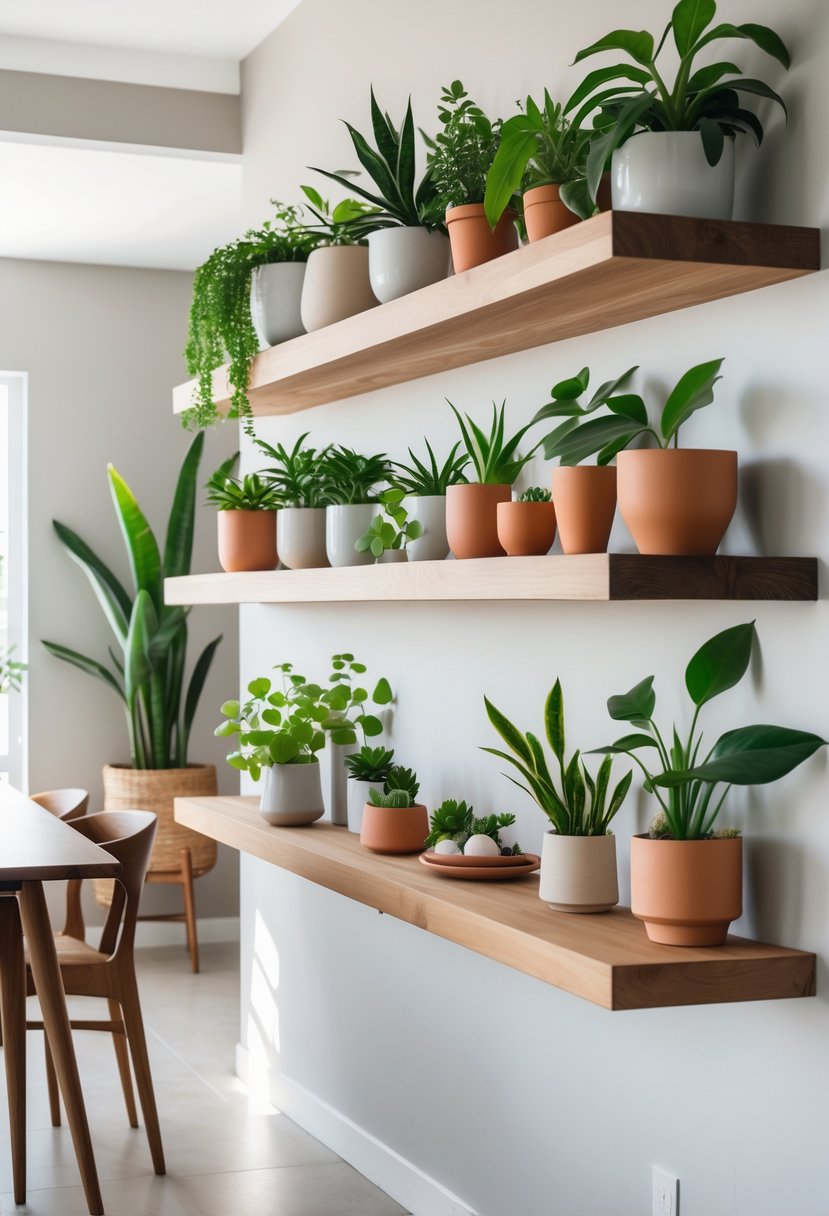
You can use floating shelves to add greenery to your dining room walls. Arrange small potted plants like succulents or ferns for a fresh, natural look. Choose shelves that match your room’s style for a clean and modern display.
Mix plants with simple decor items like glassware to keep the space balanced and inviting. This setup saves space and brings life to your dining area.
6) Metal wall sculptures for modern flair
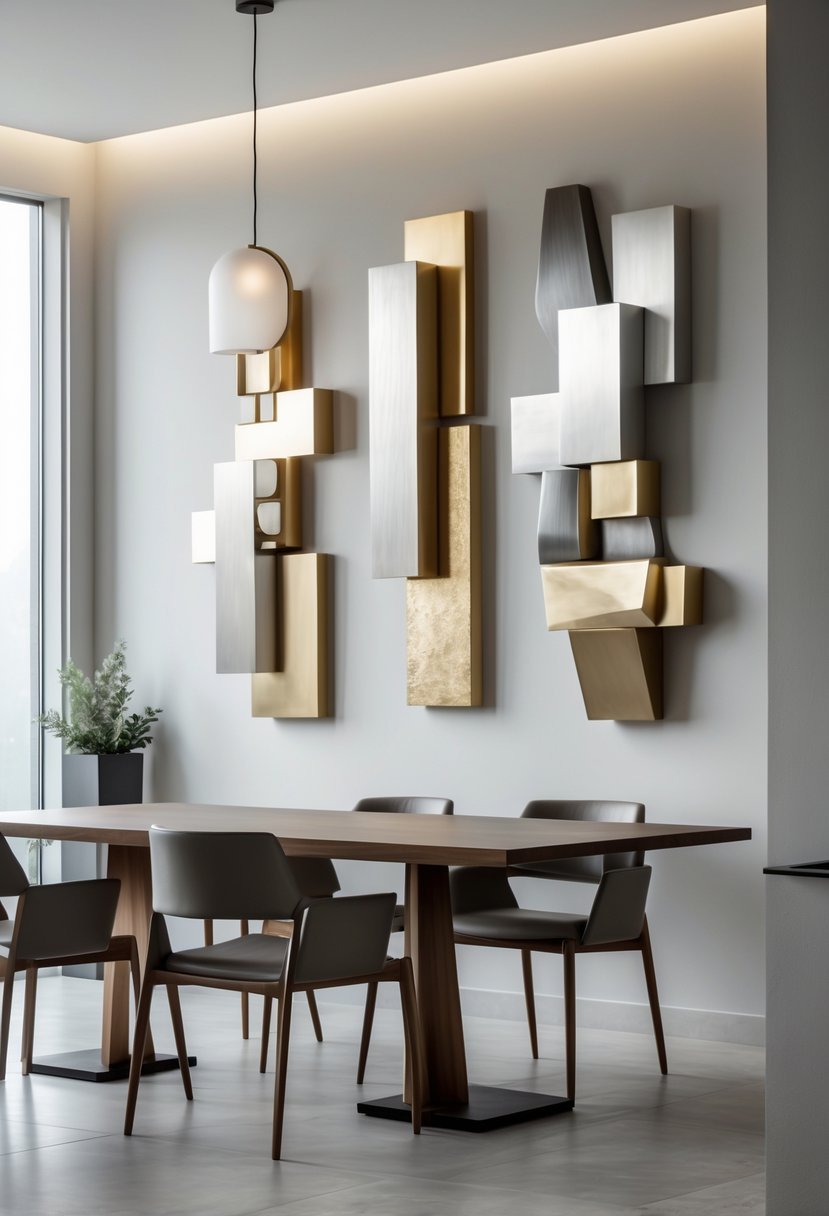
Choose metal wall sculptures with clean lines or abstract shapes to add a modern touch to your dining room.
Look for pieces that match your color scheme, like silver or black finishes for a sleek look.
Place sculptures where they catch the light, such as above a buffet or on a focal wall.
This creates interest and a fresh vibe without cluttering the room.
7) Decorative sconces for ambient lighting
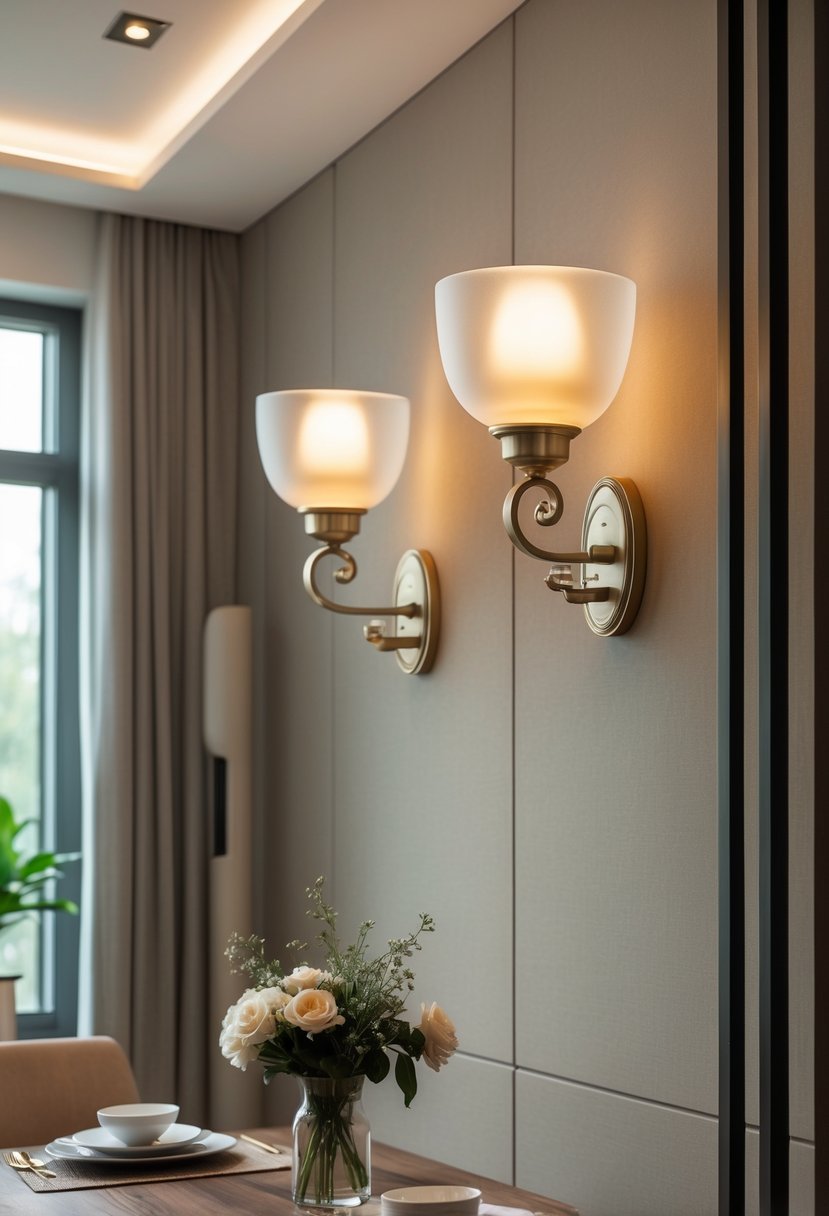
Choose decorative wall sconces to add soft, warm light to your dining room. They create a cozy atmosphere without the need for harsh overhead lights.
Pick sconces that match your dining table’s main light fixture for a balanced look.
Install them near artwork or mirrors to highlight your decor while adding gentle, inviting light.
How to Choose the Right Dining Room Wall Decor
Selecting wall decor involves thinking about your dining room’s style and how the size of your decor fits the space. Focus on making your walls feel balanced and connected to the rest of the room.
Matching Decor to Your Dining Room Style
Start by looking at your dining room’s existing design. If you have a modern room with clean lines, choose wall art with bold shapes or abstract prints. For a classic or traditional space, framed paintings or vintage mirrors work well.
You can use colors from your room palette in the decor to keep a unified look. For example:
- Neutral rooms pair well with soft, subtle wall art.
- Colorful rooms can use black-and-white photos or metallic accents to add contrast.
Think about the atmosphere you want. Warm colors and natural materials make the space feel cozy. Cool tones or minimalist art keep it calm and simple.
Considering Scale and Proportion
Check the size of the wall before picking your decor. Large walls can handle big pieces or a group of smaller pieces arranged together, like a gallery wall.
Small spaces need compact art or mirrors to avoid crowding. A good rule is to cover about 60-75% of the empty wall space to keep it balanced.
Also, match the decor height with furniture. If your dining table is tall, hang art slightly above eye level so it stays visible when people sit.
Use variety in shapes but keep the overall grouping neat to keep the room feeling ordered and welcoming.
Tips for Personalizing Your Dining Room Walls
You can make your dining room walls feel more personal by adding meaningful touches and using colors that set the right mood. Thoughtful placement of photos and smart color choices can turn your walls into a warm, inviting space that reflects your taste.
Incorporating Family Photos Artfully
Use a gallery wall to showcase family photos in different frame styles and sizes. Arrange pictures in a balanced way, mixing black-and-white prints with color ones for contrast.
Choose frames that match your dining room style, such as rustic wood for a cozy feel or sleek metals for a modern look.
Consider adding small shelves to display photo-related keepsakes like travel souvenirs alongside the pictures. This adds depth and interest.
Keep the arrangement neat and not overcrowded to avoid a cluttered look. You can also use ledges so you can easily swap out photos as you update your collection.
Using Color to Enhance Ambiance
Pick paint or wallpaper colors that create the mood you want in the dining room. Warm shades like soft reds or earthy oranges can make the space feel cozy and inviting. Cooler tones like pale blues or greens offer a calming effect.
You might also use an accent wall in a bold color to add visual interest without overwhelming the space.
If you prefer art on neutral walls, choose pieces with colors that tie the room together. Adding colorful frames or mats can help unify your decor.
Lighting also affects how color looks, so test your color choices under different lights before deciding.
Tip: Use washable paint if you want flexibility to change colors or add patterns later.
